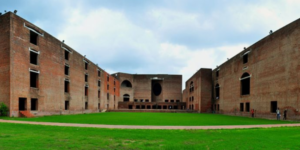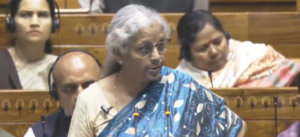The proposed UP Population Control Bill, brought in by the Yogi Adityanath-led BJP government in India’s largest state Uttar Pradesh, appears to be driven more by imagined fears than by any worries of population growth. Data over the past few decades shows clearly that population growth is slowing down irrespective of administrative action or inaction. This is an all India trend and UP is no exception.
What has not been said officially by Chief Minister Adityanath or his party, but is being perceived as the real motive behind this move is the well-known but much discredited thesis that Muslim population is growing very fast, and that it may overtake Hindu population in the future. How this can happen is never substantiated by authentic data that is available in public domain. But simply raising the worry, perhaps, serves to meet political or electoral ends. Assembly elections are slated for next year in UP, so it is no surprise that this bogey has been resurrected.
What is the data?
Total Fertility Rate (TFR), or the average number of children born to a woman, is one of the best measures of how populations increase or decrease over time. Let us look at the data on UP. It is available from the reports of various rounds of the National Family and Health Surveys (NFHS). Unfortunately, UP’s data for the latest (Fifth) round held in 2019-20 is not yet available as the pandemic seems to have interrupted the collection.
The chart below summarises the TFRs of Hindus, Muslims and total population in UP over 1998-99, which was the second round of NFHS, till 2015-16, the fourth round. Among Muslim women, the average number of children born per woman fell by about 35% from 4.76 in 1998-99 to 3.1 in 2015-16. This decline is more than the corresponding dip among Hindu women, which fell from 3.87 to 2.67 – a reduction of about 31%.
This data also shows that the overall population is also not growing as fast in UP as earlier. Average number of children born to women in the state have dipped from nearly four (3.99) to 2.74 over this 17 year period.
Increasing awareness and education, declining threat of children dying, better availability of contraception methods and, most importantly, the realisation that economic interests are not better served by having more children have created this societal phenomenon of decreasing population growth. This feeling permeates all faiths.
Poverty and Lack of Education Are Factors
NFHS surveys used to have an important bit of information that was apparently discontinued since after 2005-06 for unknown reasons. This was the correlation between fertility rates and economic status of the woman/family.
NFHS-3 report contains this data, summarised in the chart below for UP. People of the state are divided into five strata based on wealth owned by the families – from lowest (poorest) to highest (richest). As can be vividly seen, more children are born per woman in the poorer strata than in the richer ones. In fact, TFR of the richest section is less than half of the TFR of the poorest stratum.
The reason for this is well understood. It is a global feature – poverty, goes hand in hand with lack of education, less awareness about health and family planning, less reproductive rights of women and more mortality of children. All these create the urge to have more children which is seen as some security for future.
The chart below, based on latest data from the Sample Registration System (SRS) of the Census office, shows the effect of women’s education on fertility rates. TFR falls by a third if the woman is educated up to Class XII or above.
In fact, the link between woman’s education and the number of children she bears is starkly visible if one compares the TFRs in states with low female literacy with those having high literacy. According to NFHS-5 which was carried out in 2019-20, Assam had 75% female literacy and TFR of 1.87; Kerala had 97.4% female literacy and TFR of 1.79 and West Bengal had 72.9% female literacy and TFR 1.64.
On the other side, Bihar had 55% female literacy and a TFR of 2.98. Latest data is not available for UP, but the 2015-16 NFHS-4 data shows that in UP, female literacy was 61% and the TFR was 2.74. This shows that even literacy (not full education till class XII or beyond) helps in reducing the number of children being borne by women. Note that all the states given as examples above have relatively high Muslim populations.
Targeting Muslims and Dalits
Whether intentionally or not, the proposed UP Bill will hit Muslims and dalits hardest because, as per NFHS data, it is these two communities that have the higher fertility rates. Of course, this is 2015-16 data and things are changing rapidly. But still, these most deprived communities are likely to be the targets. In UP, average number of children born to dalit women was 3.09, almost the same as Muslims (3.1), and higher than the state average of 2.74.
The reason why TFR is higher among dalit communities (and also among adivasis, but UP doesn’t have a significant population of adivasis) is the same as for Muslims – poorer economic status generally, and less education. In fact, even within Muslim and dalit communities, stratification is visible, with those fortunate enough to have done better economically over the past generation, having less children.
But since Yogi Adityanath and the Rashtriya Swayamsevak Sangh are innocent of such nitty-gritty, they have taken a blow torch to the whole thing.
(Courtesy: Newsclick.)
❈ ❈ ❈
An article by Vijayta Lalwani published in Scroll.in, “As UP BJP leaders call for population control plan, 50% of party MLAs have more than two children”, adds (extract):
In recent days, BJP leaders in Uttar Pradesh, Assam and Karnataka have suggested that population control measures must be imposed. The most specific of these proposals so far is the draft put together by the UP law commission titled Uttar Pradesh Population (Control, Stabilisation and Welfare) Bill, 2021.
An analysis of Uttar Pradesh’s MLAs, based on information from the Uttar Pradesh Legislative Assembly website, found that the majority of them currently have more than two children. This includes 10 of the 23 ministers in the state cabinet and half of the ruling party’s MLAs.
Overall, 27% of Uttar Pradesh MLAs have three children, 32% have two children and 9% have one child.
Party wise break-up
The state’s legislative assembly website provides the information for 396 assembly segments out of 403. At least 52% of the total number of MLAs have more than two children.
The BJP won 304 seats, of which 50% of its MLAs have more than two children. Of the Samajwadi Party’s 49 MLAs, 55% also have more than two children.
Some MLAs have more than four children, according to the website. Roshan Lal Verma, BJP MLA from Tilhar, and Hari Ram, Apna Dal MLA from Duddhi, have eight children each. BJP MLA Madhuri Verma and Samajwadi Party MLA Rafiq Ansari have seven children each. Eight BJP MLAs have six children each: they include the state minister of excise Ram Naresh Agnihotri. So do one MLA each from the Samajwadi Party, the Bahujan Samaj Party and the Nishad party.
The information of 23 MLAs and those elected through the legislative council was not available on the website. Others, such as Chief Minister Yogi Adityanath and BJP MLA Suresh Khanna, are unmarried.
Population control
The draft Population Bill states that those with more than two children will be barred from accessing government welfare schemes. It plans to limit to just four the number of people on a family’s ration card allowed to get subsidised food from the public distribution system. It also bars people with more than two children from contesting local body elections and makes them ineligible from applying for government jobs, getting promotions, or availing of government subsidies.
It incentivises the two-child norm for public servants who undergo a voluntary sterilisation by granting two additional promotions and a subsidy to buy a plot of land, among other things.
For the general public, people who follow the norm would be granted housing loans, rebates on water and electricity bills, maternity or paternity leave with full salary and allowances. It adds that Rs 1 lakh will be given to couples below the poverty line who have only one child if it is a girl and Rs 80,000 if the child is a boy.
The draft also outlines responsibilities for the state government in expanding population control measures such as setting up a state population fund, introducing a curriculum on population control in schools, spreading awareness of family planning methods and distributing contraceptives at government health centres.
In December last year, the Central government told the Supreme Court that it would not implement a two-child policy or adopt coercive population control methods.
Experts have repeatedly pointed that coercive measures would be counterproductive and that India needed more awareness about family planning instead of a law. The fertility rate of the country has fallen from 3.4 children per woman, aged 15 years to 49 years, in 1992 to 1993 to 2.2 children in 2015 to 2016, according to data from the National Family Health Survey 4. This is projected to fall to 1.8 by 2030, without any coercive law.
❈ ❈ ❈
Another article in Newsclick by Kashif Kakvi, “MP: 39% of BJP, 34% of Congress MLAs, Including 13 Ministers, Have Three and Above Children, Shows Data”, says (extract):
Hours after the announcement of UP’s draft Population Control Bill, Vishwas Sarang, health education minister of Madhya Pradesh demanded a similar Bill. Rameshwar Sharma, former protem speaker and MLA from Bhopal’s Huzur constituency, also dashed off a letter to Chief Minister Shivraj Singh Chouhan on July 13 demanding urgent need for a population control Bill..
This is not the first time the BJP-led Madhya Pradesh government is toeing the line of his party’s government in Uttar Pradesh. Recently, Madhya Pradesh has opted for many policies of UP, including the anti-conversion law, law against stone pelters and seizure or demolition of properties of accused persons and others.
Ironically, out of 227 sitting MLAs, over 39% of the BJP MLAs, including 13 Ministers, as well as 34.8% of Congress legislators could face disqualification as they have three and above children.
According to data uploaded on the website of Madhya Pradesh Vidhan Sabha, the ruling BJP has 125 sitting MLAs, of which 49 have three and above children, including 13 ministers. One BJP MLA has nine children, another has eight while four have six children and 14 have over four children.
Out of 125 BJP MLAs, 31 are ministers, as per official data, 13 of them have three and above kids. Three Ministers — Bisahulal Singh, Prem Singh Patel and Bhupendra Singh — have five and above kids.
In the Opposition Congress, which has 95 sitting MLAs, 16 of them have three children, 12 have four, three have five and one has nine children. Congress’ Petlawad MLA, (Scheduled Caste seat) as well as Udaipur MLA (General) have nine and six kids respectively, the data reveals.
As far as Members of Parliament are concerned, Madhya Pradesh has 28 sitting Lok Sabha MPs and 10 Rajya Sabha MPs including six Union Ministers. Two seats, one each from Lok Sabha and Rajya Sabha, are vacant in the total 40 seats.
According to the data uploaded on the Lok Sabha and Rajya Sabha websites, out of 38 sitting MPs from the state, 13 have over three or more children of which 12 are from BJP.
One BJP’s Lok Sabha MP from Dhar and one Congress’ Rajya Sabha MP has five kids each, highest in the list. Four BJP MPs, including two Union Ministers, have four kids each.
Madhya Pradesh is the second largest state in the country in terms of area and fifth largest in terms of population. As per the 2011 Census, the State has a population of 7.27 crore with a growth rate of over 20%. However, the growth rate saw a steep decline from 24.34% to 20% between 2001 and 2011. The State had 6.03 crore population as per the 2001 Census.
This is not the first time that a law to control the population of Madhya Pradesh has been proposed. In 2000, the Congress-led Digvijaya Singh government opted for a two-child policy in government services and Panchayati Raj elections by amending the laws. However, the two-child policy was withdrawn in 2005 by the BJP government from the PRI elections after a backlash.
BJP Govt withdrew two-child policy for Panchayati Raj polls in 2005
The Congress government in Madhya Pradesh opted for a two-child policy in government jobs and Panchayati Raj polls almost two decades ago, in 2000.
The State had amended Madhya Pradesh Civil Services (General Condition of Services) Rules 1961. As per the order issued by the General Administrative Department of the MP Government, dated March 10, 2000: “No candidate shall be eligible for appointment to a service or post who has more than two living children one of whom is born on or after the 26th of January 2001.”
Madhya Pradesh took another step to control the population by opting for a two-child policy in PRI elections by amending Section 36(D) of Madhya Pradesh Panchayati Raj and Gram Swaraj Act, 1993 and the cut-off date for its application was prescribed as January 26, 2001. The provision was made applicable to members of PRIs, local bodies, mandis and cooperatives. The district collectorate was made responsible for implementing the provision.
However, the decision backfired and in the following PRI elections, out of the total 2,122 disqualified candidates, 54% (1,140) were for violation of the two-child norm. Subsequently, this was challenged in the MP High Court.
The High Court, in its judgment of May 17, 2002, granted a stay on the provision of M P Panchayati Raj and Gram Swaraj Act 1973 and finally, the BJP-led government withdrew the provisions in 2005.
PIL in Supreme Court
A public interest litigation was filed in the Supreme Court in December last year seeking a population control law on the lines of China’s population control model. In its reply, the Union government told the Supreme Court that India was on the verge of achieving a replacement level of fertility rate of 2.1 through various voluntary birth control measures. It added that international experience, like the China model, showed that any coercion to have a certain number of children was counterproductive and would lead to demographic distortion.
Explaining to the court, the Union Health Ministry submitted that 25 of 36 states and Union territories had already achieved replacement level fertility of 2.1 or less. But 146 districts in the seven states – Uttar Pradesh (57), Bihar (37), Madhya Pradesh (25), Rajasthan (14), Jharkhand (9), Chhattisgarh (2) and Assam (2) — had fertility rates above 3. According to the Census office, 2001-11 was the first decade in the past 100 years in which India added less to its population than in the previous one, it added.




